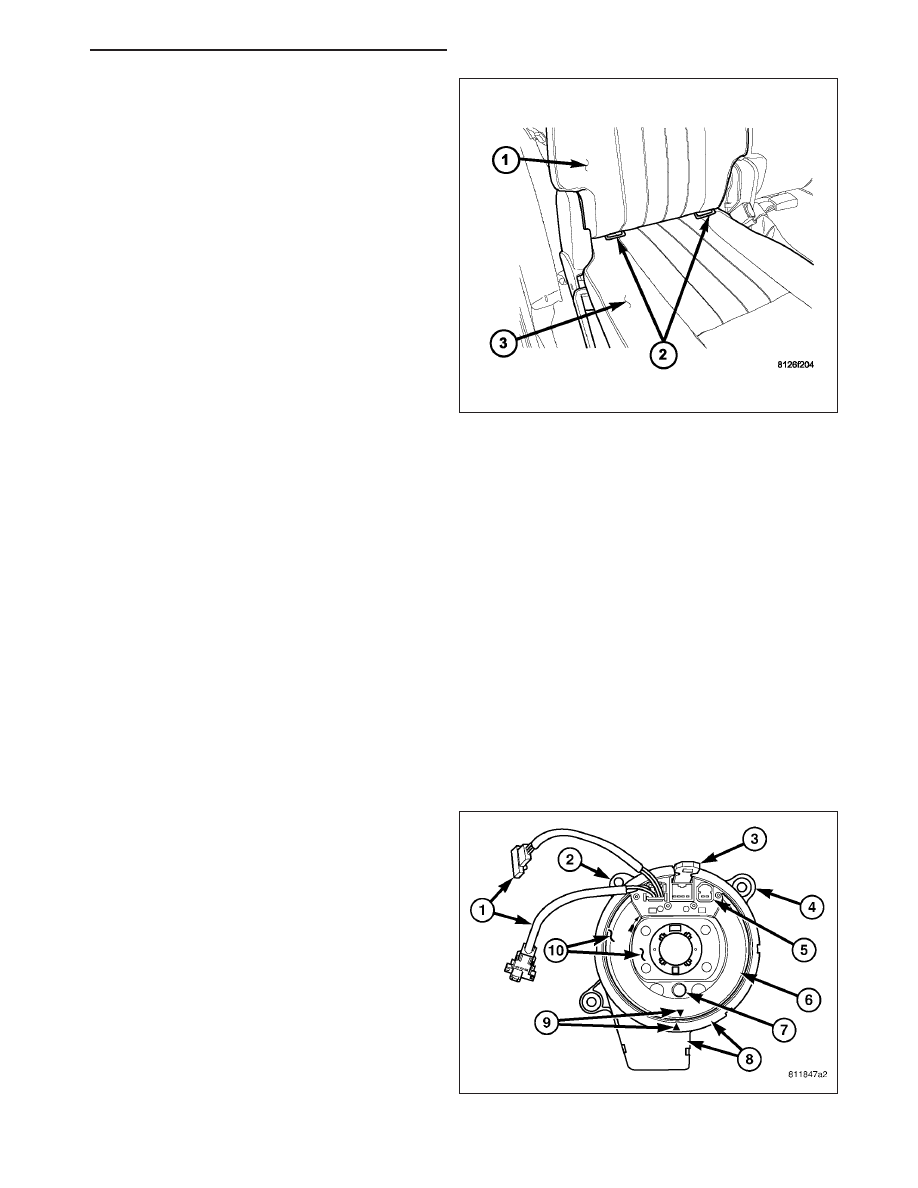Dodge Durango (HB). Manual - part 549

The lower anchors (2) for this model are also integral
to their respective second row outboard seat cushion
frame. These anchors are also constructed from a
heavy-gauge steel wire loop that is chrome plated and
securely welded to the seat cushion frame. They are
each accessed from the front of their respective seats,
at each side where the seat back (1) meets the seat
cushion (3). These lower anchors cannot be adjusted
or repaired and, if faulty or damaged, they must be
replaced as a unit with the second row seat cushion
frame unit.
WARNING: To avoid personal injury or death, during and following any seat belt or child restraint anchor
service, carefully inspect all seat belts, buckles, mounting hardware, retractors, tether straps, and anchors
for proper installation, operation, or damage. Replace any belt that is cut, frayed, or torn. Straighten any
belt that is twisted. Tighten any loose fasteners. Replace any belt that has a damaged or inoperative buckle
or retractor. Replace any belt that has a bent or damaged latch plate or anchor plate. Replace any child
restraint anchor or the unit to which the anchor is integral that has been bent or damaged. Never attempt to
repair a seat belt or child restraint component. Always replace damaged or faulty seat belt and child
restraint components with the correct, new and unused replacement parts listed in the DaimlerChrysler
Mopar Parts Catalog.
OPERATION
See the owner’s manual in the vehicle glove box for more information on the proper use of all of the factory-installed
child restraint anchors.
CLOCKSPRING
DESCRIPTION
The clockspring assembly is secured with two screws
onto the multi-function switch mounting housing near
the top of the steering column behind the steering
wheel. The clockspring consists of a flat, round
molded plastic case (8) with a stubby tail that hangs
below the steering column. The tail contains two con-
nector receptacles that face toward the instrument
panel. Within the plastic case is a spool-like molded
plastic rotor (10) with a large exposed hub. The upper
surface of the rotor hub has a large center hole, two
large flats, an engagement dowel with a yellow rubber
boot (7), two short pigtail wires with connectors (1),
and two connector receptacles (5) that face toward the
steering wheel.
HB
RESTRAINTS - SERVICE INFORMATION
8O - 465